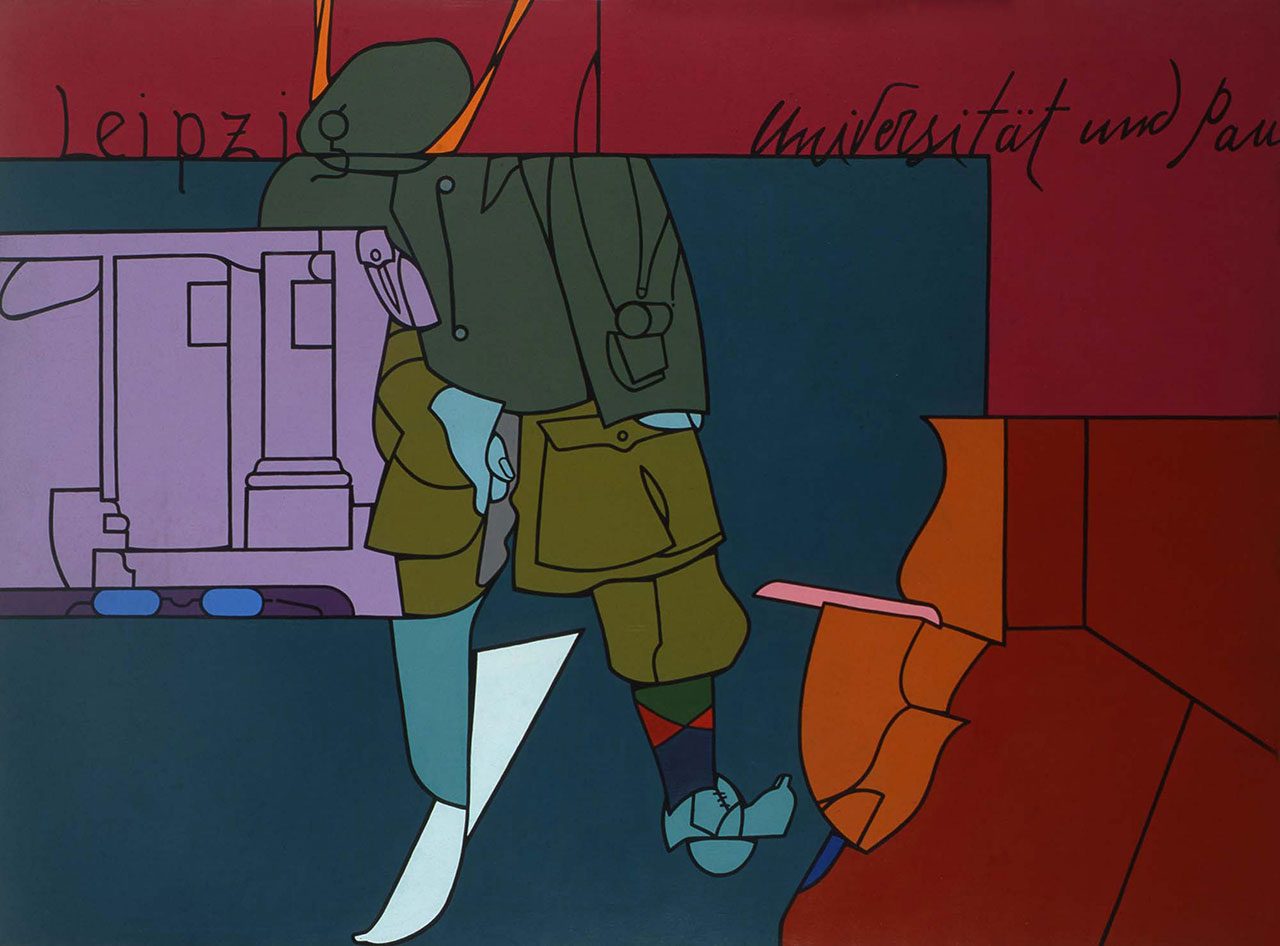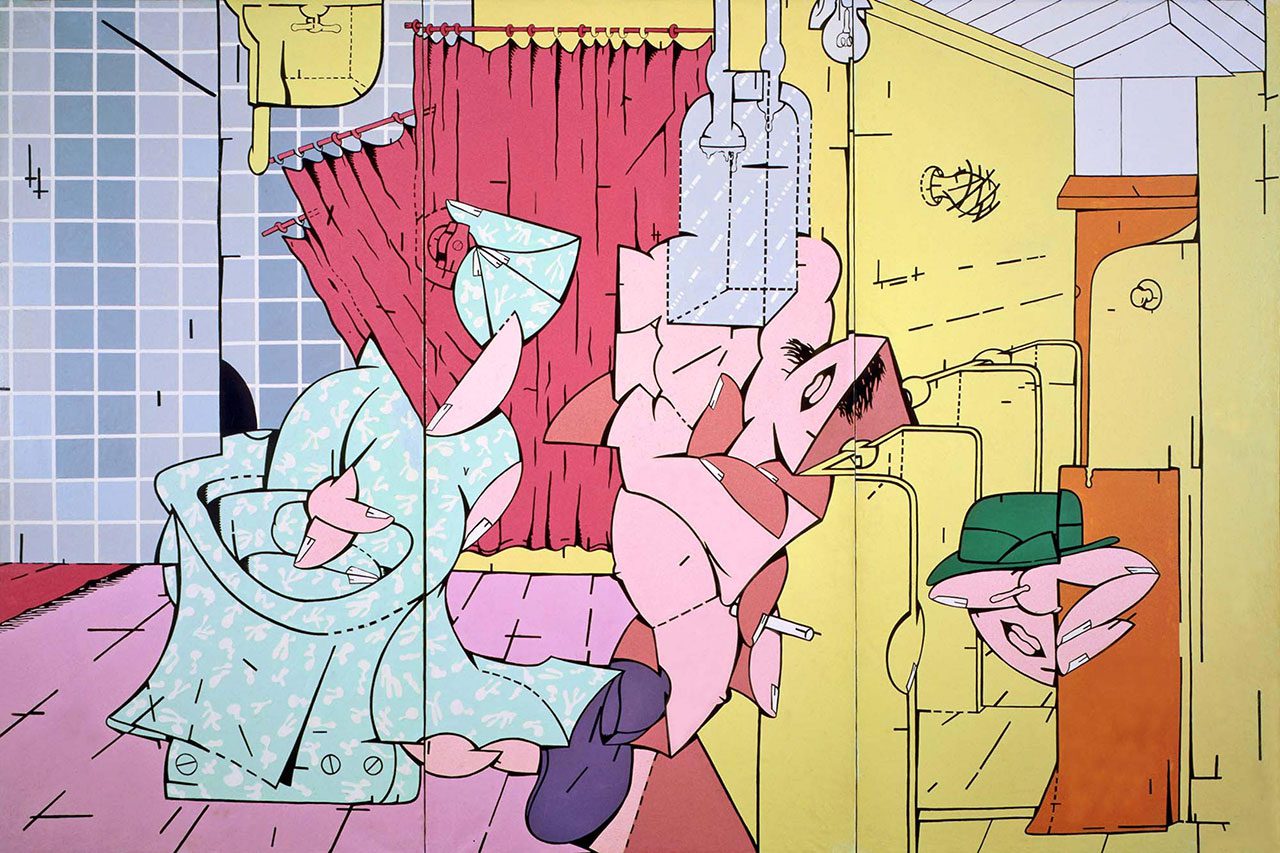PRESENTATION:Valerio Adami-Laboratorio
Valerio Adami’σ works are deeply rooted in the humanist tradition of Europe and focus on human existence and cultural identity. Some consider him a modern philosopher who expresses his thoughts through color and shape. Both his life and art were shaped by long journeys around the world and his acquaintance with various artists and intellectuals. Comic art and pop art are said to have had an enormous influence on Adami’s work. A series created during his stay in New York in 1968 caused his work to be labelled as “European pop art” for some time.
By Dimitris Lempesis
Photo: Gió Marconi Archive
The exhibition “Laboratorio” is an important tribute to Valerio Adami, sixty years after his first show at Studio Marconi in Milan and ninety years after his birth. Valerio Adami, one of the most significant post-war Italian artists and a central figure of Narrative Figuration, is known for his vibrantly colored paintings and his ability in portraying modern society in a unique visual language. Combining flat shapes, saturated colors and sharp outlines since the 1960s he has incorporated elements of everyday life into the narrative structure of his paintings, creating new and unexpected relationships among them and offering a critical and innovative view of reality. The exhibition aims to investigate a crucial period in Valerio Adami’s production, from 1962 to the early 1970s, through a thematic itinerary closely intertwined with the journeys and places the artist visited in those years. Following a chronological order, the exhibition intends to highlight the influence that the atmospheres of those places had on his work and creative process. The first chapter is dedicated to London, a city that Adami visited for the first time in 1962. During his stay, he came into contact with artists such as Graham Sutherland, Jim Dine and Richard Hamilton, figures who exerted a profound influence on his work. Although not a fan of comic strips, Adami showed a clear interest in introducing ‘sound’ into his work, through the use of onomatopoeic words inspired by the comics visual language and the contemporary music of Bruno Maderna and Luciano Berio. At the same time, Adami, with his wife and artist Camilla Cantoni, moved to the large Villa Cantoni in Arona on Lake Maggiore. This manor-house soon became a meeting place for intellectuals and artists, including Jacques Derrida, Édouard Glissant, Errò, Keizo Morishita, Titina Maselli, Eduardo Arroyo and Carlos Fuentes. Inside Villa Cantoni, Valerio Adami also set up his atelier, where he devoted himself to painting and made the film “Vacanze nel deserto” (1971), which will be screened on the occasion of the exhibition. Shot in Nouvelle Vague style, the film was the result of a collaboration between Valerio Adami and his brother Giancarlo Romani Adami, an experimental director and Federico Fellini’s assistant on the set of “La Dolce Vita” and features, among others, Dino Buzzati, Aldo Mondino and Errò. Another theme particularly dear to Valerio Adami is that of cars, closely linked to his passion for speed, so much so that in 1963 the artist enrolled in a high-speed driving school, where he had Pietro Taruffi as his teacher. As a tribute to this inclination, an exhibition room on the ground floor is entirely dedicated to the theme of cars, with particular attention to the representation of the ‘car crash’. This section displays a series of works created between 1963 and 1964, including a large canvas never exhibited before. The journey continues with a stop in Paris, which became his city of choice. Here the artist delved into the theme of urban interiors, intimately connected to the exploration of the human psyche. This research found expression in iconic works, where the deflagration of bodies and the decomposition of the image, distinctive elements of Adami’s style in this period, strongly emerge. Paris was also an opportunity to meet Carlos Franqui, a poet and journalist prominent in the Cuban Revolution alongside Fidel Castro. This connection led Adami to visit Cuba in 1967, during a crucial historical period for the island, marked by a lively cultural ferment in the post-revolutionary context. After the ‘interiors’ of Paris, characterised by delicate pastel colors, the exhibition concludes with the ‘exteriors’ of New York, where the tones become gloomier and the color palette darkens, reflecting the atmosphere of the metropolis. Valerio and Camilla Adami moved to New York in 1966, staying at the Chelsea Hotel. Here they came into contact with the city’s underground environment, frequenting a vibrant art scene and meeting prominent figures such as Saul Steinberg, Ray Johnson and the poet Allen Ginsberg. In this phase, the artist explored photography as a new medium, integrating it with drawing, a habitual practice for Adami, to design the composition of his canvases. With his camera, he captured serial fragments of the city, creating an authentic visual archive from which he would draw for many of his future works, along with the thousands of images he cut out of newspapers and books throughout his life. The exhibition presents a selection of photographs taken on the streets of New York, depicting shop windows, hotel rooms, public restrooms and underground stations. From these images come some of his most famous works, such as “Latrine in Times Square” and “Hotel Chelsea Bathroom”. Spread over three floors of the exhibition space, the show offers the public a wide selection of works, including canvases, drawings, photographs, archive material and the film “Vacanze nel deserto” allowing visitors to discover the evolution of Adami’s visual language and the unceasing spirit of experimentation of these years. A further example of this artistic research is closely linked to the city of Milan, another key place in Valerio Adami’s path. Milan represents an essential crossroad in his career, deeply intertwining his figure with that of gallery owner Giorgio Marconi, with whom he established an indissoluble bond. Valerio Adami made his debut in the Milanese gallery in 1965 in a group show, and then held his first solo exhibition in 1969. That memorable event featured a unique installation: a boxing match in a ring built in the basement of Studio Marconi, that was regularly announced by the Gazzetta dello Sport. The positioning of the ring allowed spectators to watch both the match and the large-sized painting entitled “Boxing Ring” thus creating an unprecedented dialogue between work and performance. The following year, in 1970, Studio Marconi hosted a new experimental intervention by Valerio Adami, presenting a real photographic exhibition as part of the cycle of shows called “Laboratorio” of which Adami’s represented the second appointment. In 1972, again edited by Studio Marconi, the album “Concerto per un quadro di Valerio Adami: was released, a recording born out of the conversation between the artist and the African-American critic Henry Martin on the painting “L’Università di Lipsia al tempo di Nietzsche”.
Photo: Valerio Adami, Privacy. Gli omosessuali, 1966, Acrylic on canvas, 200 x 300 cm, © Valerio Adami, Courtesy the artist and Fondazione Marconi
Info: Fondazione Marconi, Via Tadino 15, Milan, Italy, Duration: 28/3-11/7/2025, Days & Hours: Tue-Sat 11:00-18:00, www.fondazionemarconi.org/
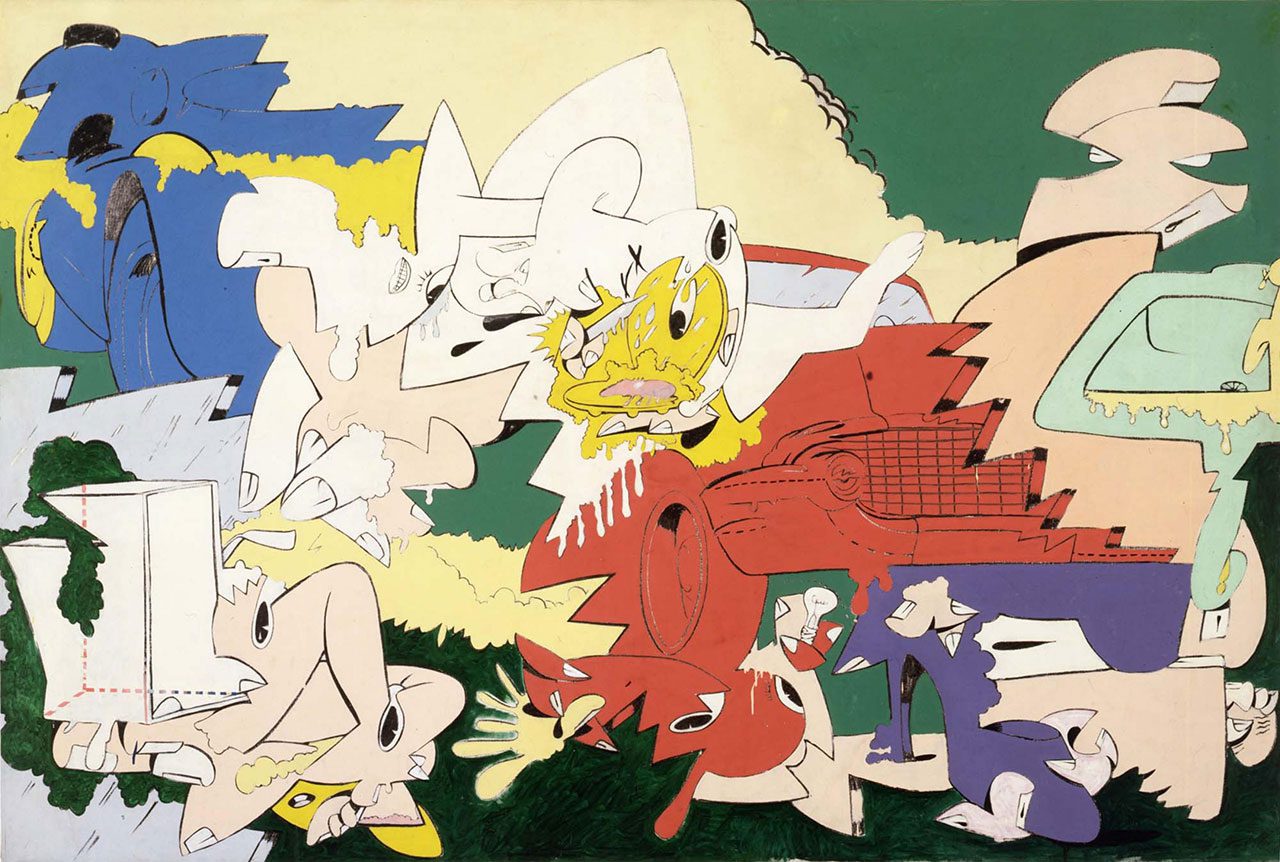
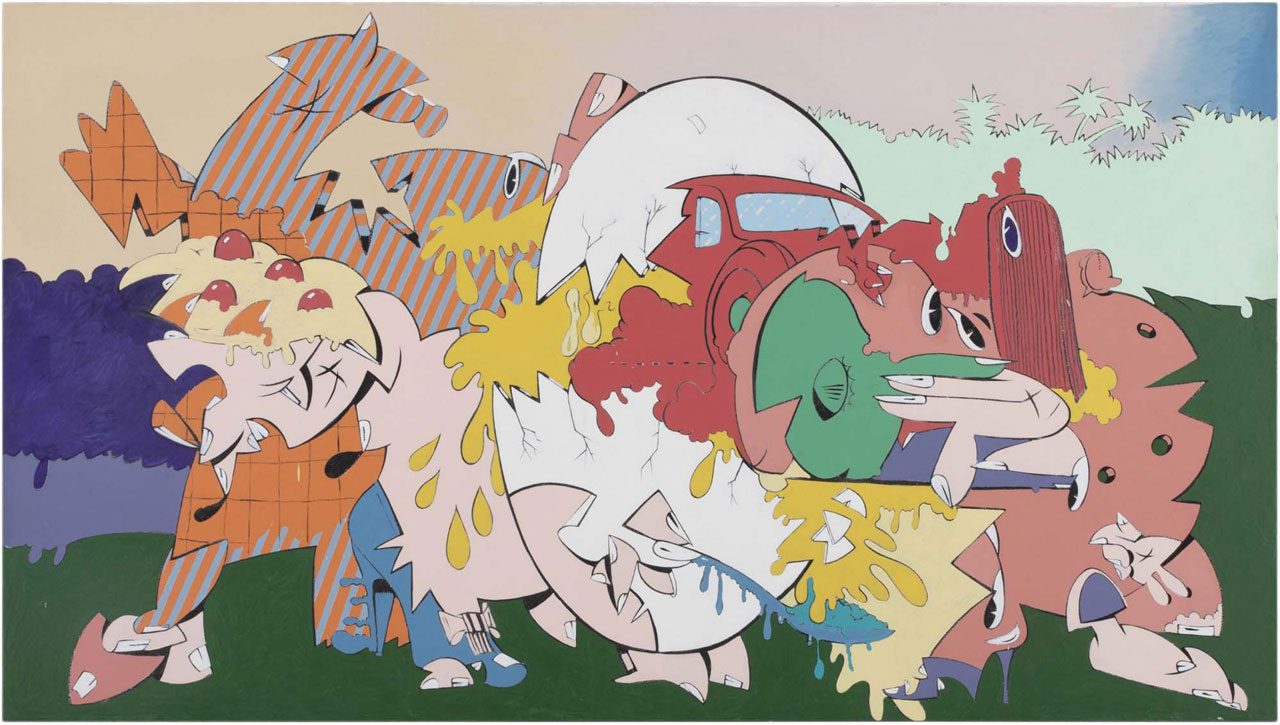

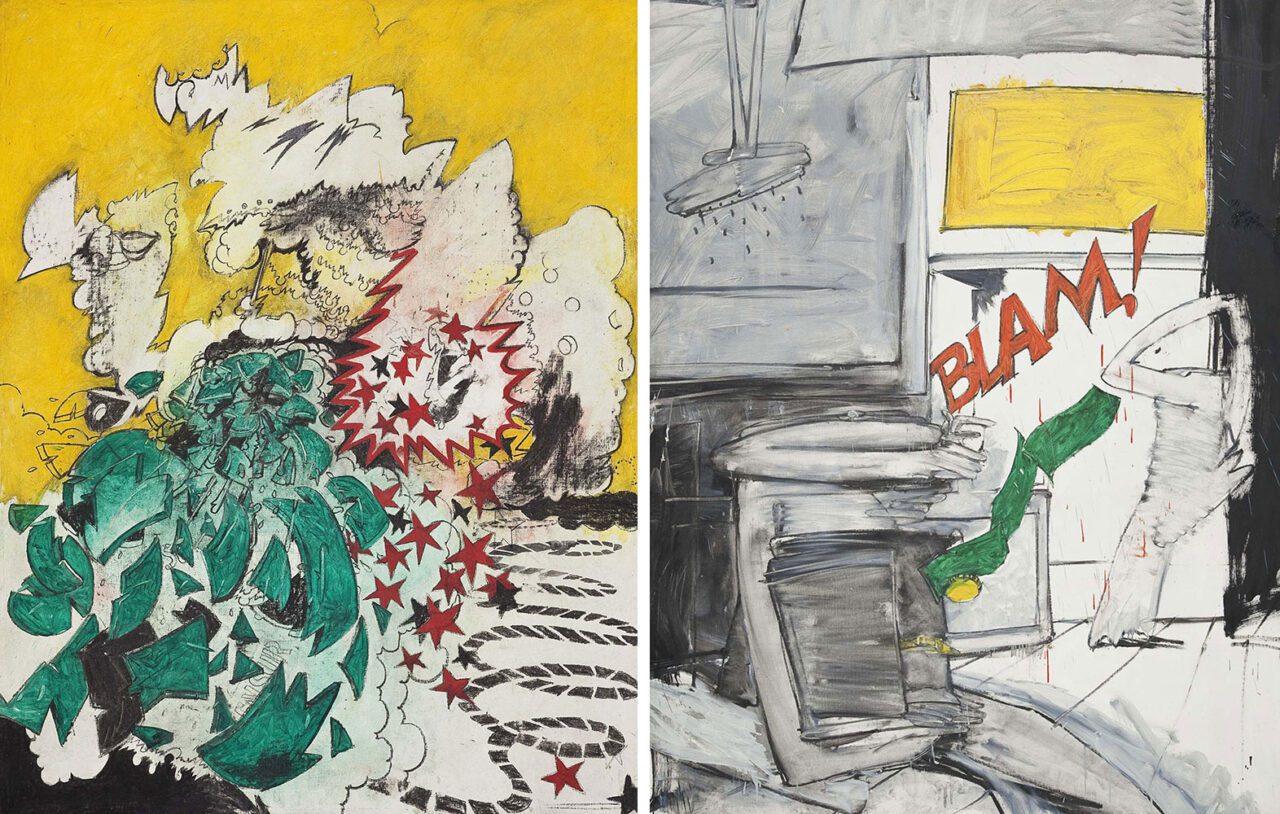
Right: Valerio Adami, Blam, 1962, Oil on canvas, 177 x 140 cm, © Valerio Adami, Courtesy the artist and Fondazione Marconi
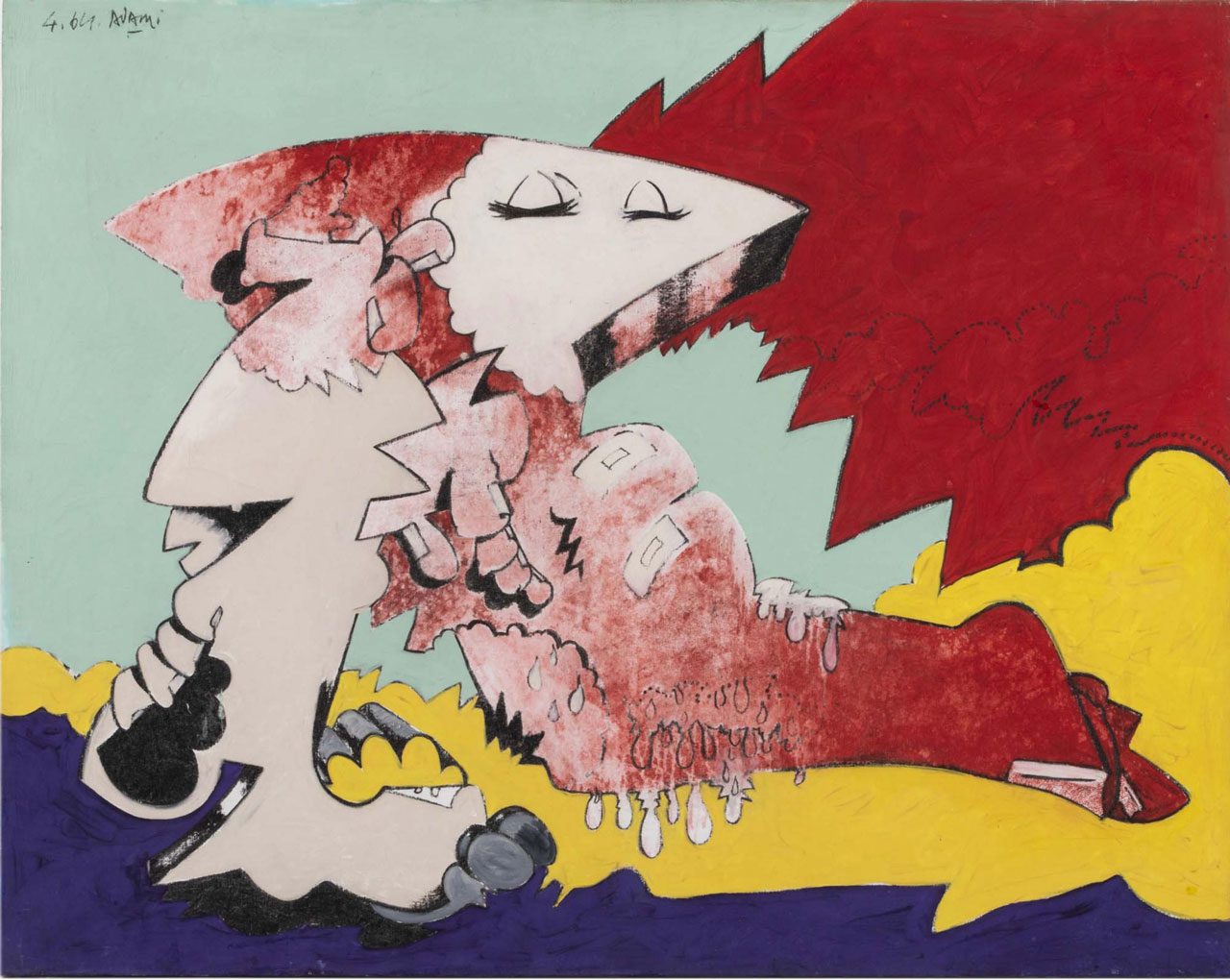
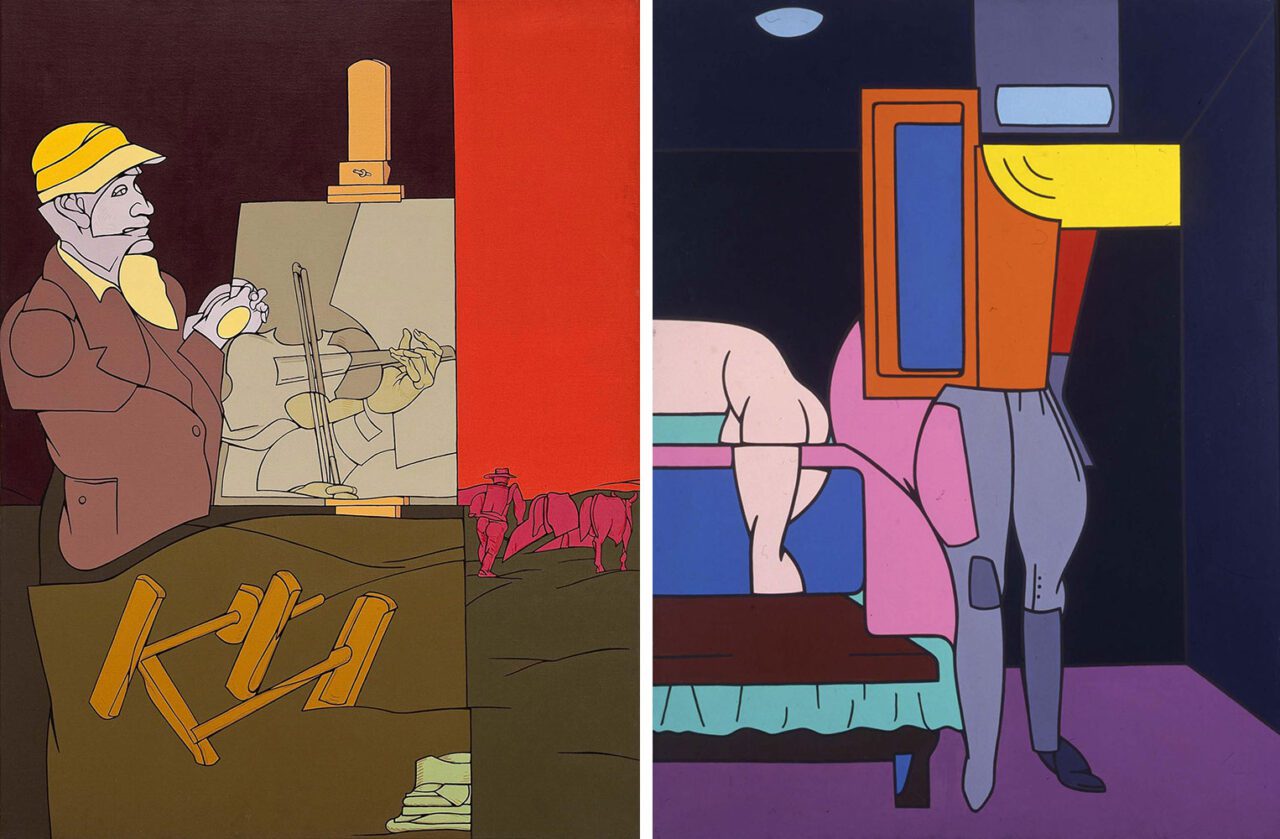
Right: Valerio Adami, I pantaloni da cavallo, 1969, Acrylic on canvas, 198 x 147.5 cm, © Valerio Adami, Courtesy the artist and Fondazione Marconi
